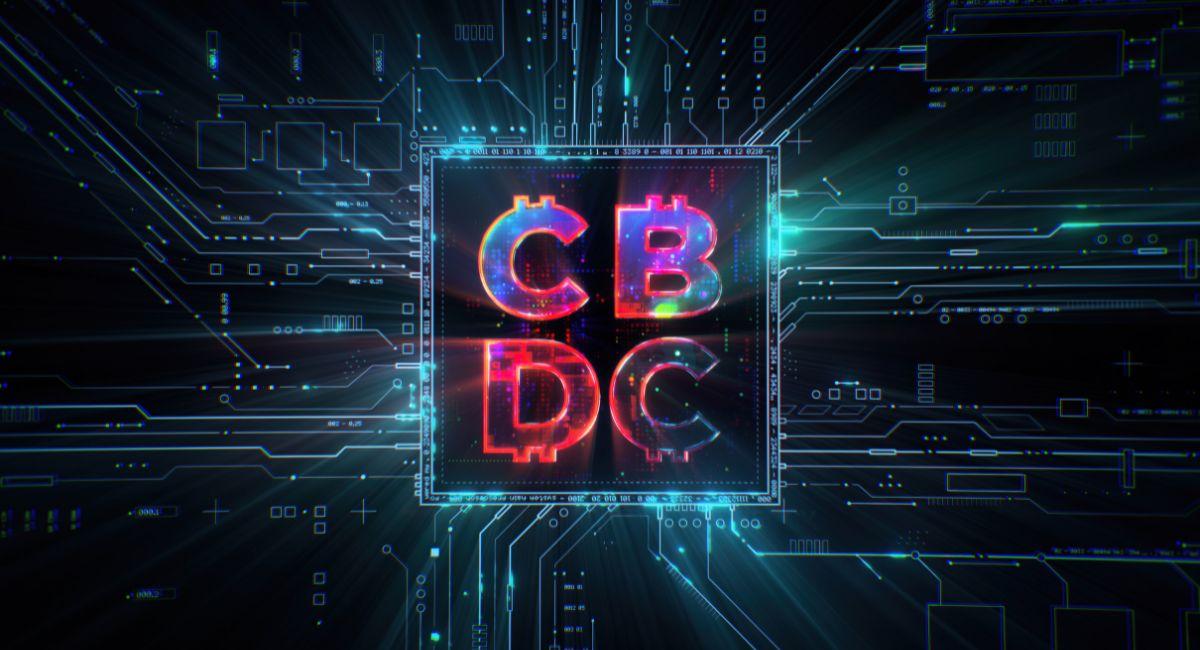Shaping The Future With Top 10 Goals of Central Bank Digital Currencies (CBDC) In The Coming Years
Central Bank Digital Currencies (CBDCs) represent a transformative frontier in the realm of monetary policy and financial technology. As central banks around the world explore and develop their digital currencies, a set of key goals emerges to guide their implementation and impact on the financial landscape. This comprehensive exploration delves into the top 10 goals of CBDCs in the coming years, illuminating the strategic objectives that central banks aim to achieve through the adoption of digital currencies.
1. Financial Inclusion: Bridging the Gap
Goal: Universal Access to Financial Services
One of the primary goals of CBDCs is to enhance financial inclusion by providing universal access to financial services. The aim to serve as an inclusive and efficient means of payment, reducing the reliance on traditional banking infrastructure and extending financial services to unbanked and underbanked populations.
Strategy: Digital Wallet Accessibility
Central banks intend to design CBDCs with user-friendly interfaces, ensuring that individuals across various demographics can easily access and utilize digital wallets. This goal aligns with broader efforts to address the global financial inclusion gap and empower individuals with secure and accessible financial tools.
2. Efficiency and Cost Reductions
Goal: Streamlining Payment Systems
It seek to streamline payment systems by leveraging blockchain technology and decentralized ledgers. The goal is to facilitate faster, cheaper, and more efficient transactions, reducing reliance on intermediaries and enhancing the overall speed and cost-effectiveness of the payment ecosystem.
Strategy: Real-Time Settlements
Central banks aim to implement real-time settlement capabilities, enabling instantaneous and secure transactions. This not only benefits consumers but also enhances the efficiency of interbank transactions and cross-border payments, contributing to a more seamless global financial landscape.
3. Monetary Policy Tools
Goal: Enhancing Monetary Policy Flexibility
It provide central banks with additional tools to implement and fine-tune monetary policy. By offering more direct control over the money supply and influencing interest rates, CBDCs can enhance a central bank’s ability to respond to economic fluctuations and challenges.
Strategy: Programmable Money
The programmability allows for the implementation of smart contracts and automated monetary policies. Central banks can design programmable features that respond dynamically to economic indicators, fostering a more adaptive and responsive monetary policy framework.
4. Privacy and Security
Goal: Balancing Privacy and Regulatory Compliance
The aim to strike a balance between user privacy and regulatory compliance. Central banks recognize the importance of privacy in financial transactions while ensuring that digital currencies adhere to anti-money laundering (AML) and know your customer (KYC) regulations.
Strategy: Layered Privacy Measures
Implementing layered privacy measures, such as zero-knowledge proofs or privacy-focused features, can safeguard users’ financial information while still allowing regulatory authorities to monitor and address potential illicit activities. Striking this balance is crucial for widespread CBDC adoption.
5. Cross-Border Payments
Goal: Facilitating Cross-Border Transactions
It aspire to simplify and expedite cross-border payments, addressing the challenges associated with the current international payment infrastructure. This goal involves fostering interoperability between different CBDCs and traditional financial systems.
Strategy: Interconnected CBDC Networks
Central banks may collaborate to establish interconnected networks, allowing for seamless cross-border transactions. Standardized protocols and interoperability frameworks can contribute to a more interconnected global financial system.
6. Financial Stability
Goal: Mitigating Systemic Risks
Central banks are mindful of the potential systemic risks associated with the widespread adoption. The goal is to implement measures that enhance financial stability, including robust cybersecurity protocols, risk management strategies, and stress-testing frameworks.
Strategy: Collaborative Risk Assessment
Central banks may collaborate on risk assessment and scenario analysis to identify and address potential vulnerabilities in the financial system. This proactive approach helps ensure the stability and resilience of the broader financial infrastructure.
7. Technological Innovation
Goal: Fostering Innovation in Financial Services
The aim to serve as catalysts for technological innovation within the financial services sector. Central banks envision an ecosystem where fintech companies and developers can leverage CBDCs to create innovative and value-added financial products and services.
Strategy: Regulatory Sandboxes
By establishing regulatory sandboxes and frameworks that encourage experimentation, central banks seek to foster a dynamic environment for technological innovation. This approach allows for the exploration of new use cases and applications within the ecosystem.
8. Cybersecurity Resilience
Goal: Fortifying Cybersecurity Defenses
Recognizing the critical importance of cybersecurity, central banks set the goal of fortifying the resilience systems against cyber threats. Safeguarding digital currencies from malicious activities is essential for maintaining public trust and confidence.
Strategy: Continuous Security Audits
Implementing continuous security audits and penetration testing helps identify vulnerabilities in systems. Regular updates and collaboration with cybersecurity experts contribute to building robust defense mechanisms against evolving cyber threats.
9. Public Education and Awareness
Goal: Promoting Understanding and Adoption
The aim to be widely understood and accepted by the general public. Central banks recognize the importance of public education and awareness campaigns to dispel misconceptions, build trust, and encourage the adoption of digital currencies.
Strategy: Educational Initiatives
Central banks may launch educational initiatives, including workshops, seminars, and online resources, to inform the public about the benefits, use cases, and security features. Building a knowledgeable and informed user base is crucial for the successful integration into everyday financial transactions.
10. International Collaboration
Goal: Establishing Global Standards
Given the potential global impact of it, central banks aspire to collaborate on establishing international standards and best practices. This goal involves fostering cooperation to address common challenges and ensure consistency in the implementation of CBDCs worldwide.
Strategy: International CBDC Forums
Participation in international forums and collaborations enables central banks to share insights, coordinate efforts, and collectively shape the future of it. Establishing common standards facilitates interoperability and contributes to the harmonious integration of digital currencies on a global scale.
India’s E-rupee, the central bank’s digital currency (CBDC), hit a milestone with over 1 million transactions in a day.
This happened because people working in regular banks were encouraged to use digital rupees instead of the normal money for their deposits and benefits.
Are… pic.twitter.com/umfuppD3J9
— Sumit Kapoor (@moneygurusumit) January 5, 2024
What is the concept of CBDC?

The concept of Central Bank Digital Currency (CBDC) represents a paradigm shift in the world of finance, offering a digital incarnation of a nation’s official currency issued and regulated by its central bank. CBDCs have emerged as a response to the evolving landscape of payments, the rise of cryptocurrencies, and the increasing digitization of economies. This detailed exploration delves into the intricacies of CBDC, unraveling its concept, underlying technologies, potential implications, and the broader implications for the future of money.
1. Definition and Core Concept of CBDC:
Definition:
Central Bank Digital Currency (CBDC) is a digital form of a country’s official currency, issued and regulated by its central bank. Unlike cryptocurrencies such as Bitcoin or Ethereum, they are considered legal tender and are fully backed by the issuing central authority. They coexist with physical banknotes and coins, providing a digital alternative for transactions.
Core Concept:
The core concept of revolves around the digitization of sovereign currency, allowing it to be transacted in a digital form. It is an extension of traditional forms of money into the digital realm, providing a secure, efficient, and regulated means of conducting financial transactions.
2. Types of CBDC:
Retail CBDC:
Retail CBDC is designed for the general public and serves as a digital alternative to physical currency. Individuals and businesses can hold and transact with retail CBDC using digital wallets provided by the central bank.
Wholesale CBDC:
Wholesale CBDC is intended for financial institutions and facilitates interbank transactions. It operates in the wholesale financial market, allowing for faster and more efficient settlement of transactions between banks.
3. Underlying Technologies:
Blockchain Technology:
Many CBDC initiatives explore the use of blockchain technology for the issuance and management of digital currencies. Blockchain provides a decentralized and secure ledger that ensures transparency, traceability, and immutability of transactions.
Distributed Ledger Technology (DLT):
DLT, a broader category that includes blockchain, is also considered for CBDC implementations. DLT allows for the distributed and synchronized recording of transactions across multiple participants, enhancing the efficiency and integrity of the digital currency system.
4. Objectives and Goals of CBDC:
Financial Inclusion:
The aim to promote financial inclusion by providing a digital means of payment accessible to a broader population. This is particularly relevant in regions where traditional banking services are limited.
Payment System Efficiency:
Efficiency in the payment system is a key goal, with CBDCs designed to streamline transactions, reduce settlement times, and lower transaction costs. This can enhance the overall efficiency of the financial system.
5. Implications for Monetary Policy:
Enhanced Policy Tools:
It provide central banks with additional tools for implementing monetary policy. Central banks can directly control the money supply, influence interest rates, and respond more effectively to economic conditions.
Programmable Money:
The programmability of it allows for the implementation of smart contracts and automated policies, providing central banks with dynamic and adaptable monetary tools.
6. Privacy and Security Considerations:
Privacy:
The aim to strike a balance between user privacy and regulatory compliance. Design considerations include incorporating privacy features and ensuring compliance with anti-money laundering (AML) and know your customer (KYC) regulations.
Cybersecurity:
Security is paramount in systems. Robust cybersecurity measures, continuous audits, and adherence to best practices are essential to safeguard the digital currency against cyber threats.
7. Cross-Border Transactions:
Facilitating Cross-Border Payments:
It have the potential to simplify and expedite cross-border transactions. Interconnected CBDC networks can reduce friction in international payments, fostering global financial integration.
Interoperability:
For cross-border transactions to be seamless, central banks need to collaborate on interoperability standards, ensuring that different CBDCs can interact seamlessly.
8. Challenges and Risks:
Technological Challenges:
Implementing comes with technological challenges, including scalability, network security, and the choice of underlying technology. Addressing these challenges is crucial for the successful deployment of digital currencies.
Economic Implications:
It could impact traditional banking structures, potentially leading to changes in deposit patterns and the role of commercial banks. Central banks need to carefully consider the economic implications of adoption.
9. Global Perspectives and Adoption:
International Collaboration:
Central banks globally are exploring CBDCs, with some countries already in advanced stages of development. International collaboration is crucial to establish common standards, ensuring harmonious integration on a global scale.
Varied Approaches:
Different countries are taking varied approaches to development, with some prioritizing retail CBDCs for widespread public use, while others focus on wholesale for interbank transactions.
10. Public Education and Adoption:
Public Awareness:
For successful adoption, central banks need to conduct public awareness campaigns and educational initiatives. Informing the public about the benefits, risks, and usage of CBDCs is vital for building trust and acceptance.
User-Friendly Interfaces:
Central banks aim to design systems with user-friendly interfaces, ensuring that individuals of all demographics can easily access and transact with digital currencies.
As the concept of Central Bank Digital Currency takes center stage in the global financial landscape, the vision is one of a digitally inclusive future where sovereign currencies seamlessly transition into the digital realm. The journey involves addressing technological challenges, balancing privacy and security, and fostering international collaboration. They are not just a technological innovation; they represent a fundamental shift in how we conceptualize and interact with money, laying the groundwork for a new era in the evolution of currency and finance.
How many types of CBDC are there?

The landscape is evolving rapidly, and different central banks are adopting diverse approaches based on their economic and policy objectives. Below are several types of CBDCs, categorized based on their key characteristics.
Retail CBDC:
- Definition: Retail is designed for general public use and provides individuals and businesses with direct access to digital central bank money.
- Key Features:
- Accessibility: Retail aim to be accessible to the entire population, promoting financial inclusion.
- User-Friendly Interfaces: Designed with user-friendly interfaces, including digital wallets, for easy adoption.
- Everyday Transactions: Intended for everyday transactions such as payments, purchases, and peer-to-peer transfers.
- Examples: The Bahamas’ Sand Dollar, the People’s Bank of China’s Digital Currency Electronic Payment (DCEP).
2. Wholesale CBDC:
- Definition: Wholesale is targeted at financial institutions and facilitates interbank transactions in the wholesale financial market.
- Key Features:
- Interbank Settlement: Wholesale CBDCs streamline interbank settlements and transactions.
- Large-Scale Transactions: Primarily used for large-scale financial transactions between banks.
- Examples: Project Jasper by the Bank of Canada, Project Ubin by the Monetary Authority of Singapore.
3. Hybrid CBDC:
- Definition: Hybrid incorporates features of both retail and wholesale CBDCs, offering a versatile digital currency.
- Key Features:
- Accessible to Both Public and Institutions: Hybrid CBDCs aim to serve the needs of both individuals and financial institutions.
- Dual-Use Cases: Supports retail transactions while also facilitating large-scale interbank settlements.
- Examples: While there are no widely adopted examples, some central banks are considering hybrid models to combine the benefits of retail and wholesale CBDCs.
4. Token-Based CBDC:
- Definition: Token-based use digital tokens as representations of value, often built on blockchain or distributed ledger technology.
- Key Features:
- Tokenized Assets: CBDCs are represented as digital tokens on a blockchain, providing transparency and traceability.
- Programmable Money: Allows for programmable features, smart contracts, and automated policies.
- Examples: No widely adopted examples, but various projects are exploring token-based CBDC concepts.
5. Account-Based CBDC:
- Definition: Account-based CBDCs involve direct accounts held with the central bank, providing a digital alternative to traditional bank accounts.
- Key Features:
- Direct Accounts: Individuals and businesses have direct accounts with the central bank, bypassing commercial banks.
- Controlled by Central Bank: Centralized control over accounts and transactions.
- Examples: None in widespread use, but some central banks are considering account-based models.
6. Cross-Border CBDC:
- Definition: Cross-border CBDCs aim to facilitate seamless and efficient cross-border transactions between different jurisdictions.
- Key Features:
- Interoperability: Designed to work seamlessly with CBDCs from other countries, fostering international cooperation.
- Reduced Friction: Intends to reduce friction in cross-border transactions, making them faster and more cost-effective.
- Examples: None widely implemented, but various central banks are exploring cross-border CBDC collaborations.
7. Interest-Bearing CBDC:
- Definition: Interest-bearing CBDCs offer holders the opportunity to earn interest on their digital holdings, providing an incentive for adoption.
- Key Features:
- Yield on Holdings: Users earn interest on their CBDC holdings, encouraging savings and long-term usage.
- Monetary Policy Tool: Central banks can use interest rates on CBDCs as a tool for implementing monetary policy.
- Examples: No widely adopted examples, but some discussions involve the potential for interest-bearing CBDCs.
8. Anonymous CBDC:
- Definition: Anonymous CBDCs prioritize user privacy by implementing features that protect the identity of individuals during transactions.
- Key Features:
- Enhanced Privacy: Utilizes cryptographic techniques to anonymize transactions, protecting user identities.
- Regulatory Compliance: Balances privacy with the need for regulatory compliance, such as anti-money laundering (AML) measures.
- Examples: No widely implemented examples, as privacy features must align with regulatory requirements.
The landscape of CBDCs is dynamic, and central banks are continuously exploring and experimenting with different models to meet their specific economic and policy objectives. The categorization of CBDC types is not rigid, and there can be overlaps or variations based on the unique characteristics adopted by individual central banks. As the journey toward CBDC adoption unfolds, the financial ecosystem is witnessing an era of innovation and transformation in the concept and implementation of digital currencies.
Also, read – How CBDC Can Impact Global Financial System: Implementing CBDC
Conclusion: A Digital Future in the Making
As central banks embark on the journey of developing and implementing, the top 10 goals outlined above serve as a guiding framework for their strategic initiatives. The coming years hold the promise of a digital future where contribute to financial inclusion, technological innovation, and the evolution of monetary policy. Balancing privacy, security, and global collaboration is key to unlocking the full potential of central bank digital currencies and shaping a more inclusive and efficient financial landscape.
Stay informed with daily updates from Blockchain Magazine on Google News. Click here to follow us and mark as favorite: [Blockchain Magazine on Google News].
editor's pick
Get Blockchain Insights In Inbox
Stay ahead of the curve with expert analysis and market updates.
latest from tech
Disclaimer: Any post shared by a third-party agency are sponsored and Blockchain Magazine has no views on any such posts. The views and opinions expressed in this post are those of the clients and do not necessarily reflect the official policy or position of Blockchain Magazine. The information provided in this post is for informational purposes only and should not be considered as financial, investment, or professional advice. Blockchain Magazine does not endorse or promote any specific products, services, or companies mentioned in this posts. Readers are encouraged to conduct their own research and consult with a qualified professional before making any financial decisions. The featured image used is just a creative depiction of the title and it does not intend to hurt sentiments of any person or institution. If it hurts anyone sentiments, please do not hesitate to reach out to Blockchain Magazine.

 Bitcoin
Bitcoin  Ethereum
Ethereum  XRP
XRP  Tether
Tether  Solana
Solana  USDC
USDC  Dogecoin
Dogecoin  Cardano
Cardano  Lido Staked Ether
Lido Staked Ether  TRON
TRON  Wrapped Bitcoin
Wrapped Bitcoin  Chainlink
Chainlink  Wrapped stETH
Wrapped stETH  Avalanche
Avalanche  Sui
Sui  Stellar
Stellar  Litecoin
Litecoin  Toncoin
Toncoin  Shiba Inu
Shiba Inu  Hedera
Hedera  LEO Token
LEO Token  USDS
USDS  MANTRA
MANTRA  Hyperliquid
Hyperliquid  Polkadot
Polkadot  WETH
WETH  Bitcoin Cash
Bitcoin Cash  Bitget Token
Bitget Token  Ethena USDe
Ethena USDe  Wrapped eETH
Wrapped eETH  Uniswap
Uniswap  Monero
Monero  NEAR Protocol
NEAR Protocol  Pepe
Pepe  WhiteBIT Coin
WhiteBIT Coin  Aave
Aave  Ondo
Ondo  Bittensor
Bittensor  Aptos
Aptos  Internet Computer
Internet Computer  Dai
Dai  Official Trump
Official Trump  Ethereum Classic
Ethereum Classic  Mantle
Mantle  Tokenize Xchange
Tokenize Xchange  OKB
OKB  Gate
Gate  sUSDS
sUSDS  Coinbase Wrapped BTC
Coinbase Wrapped BTC 




